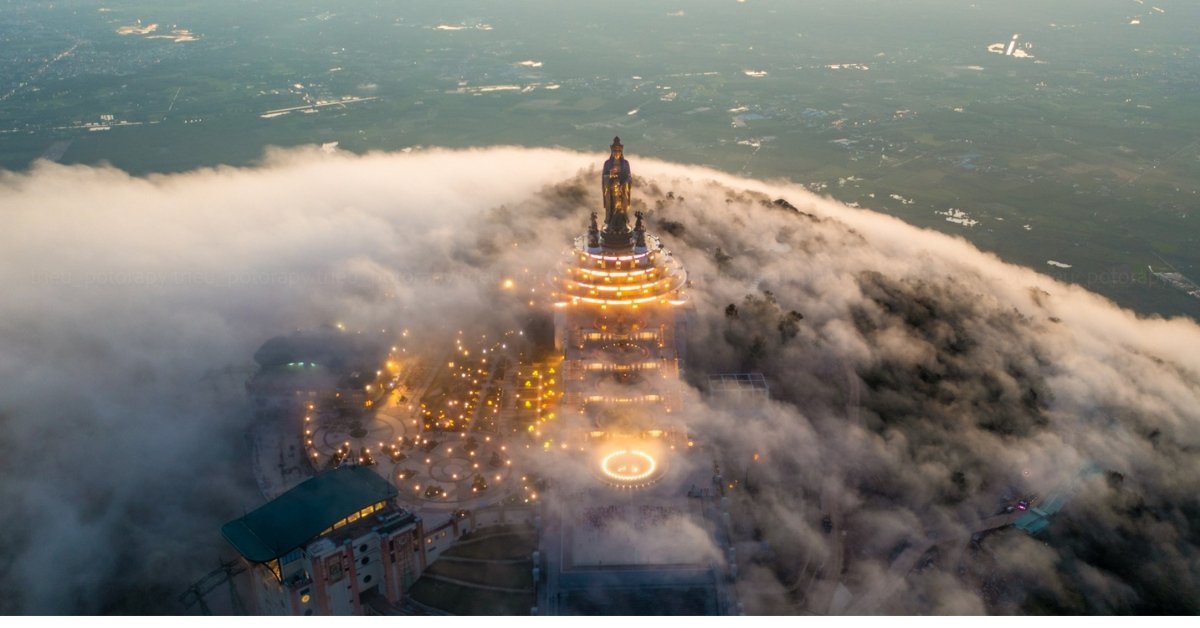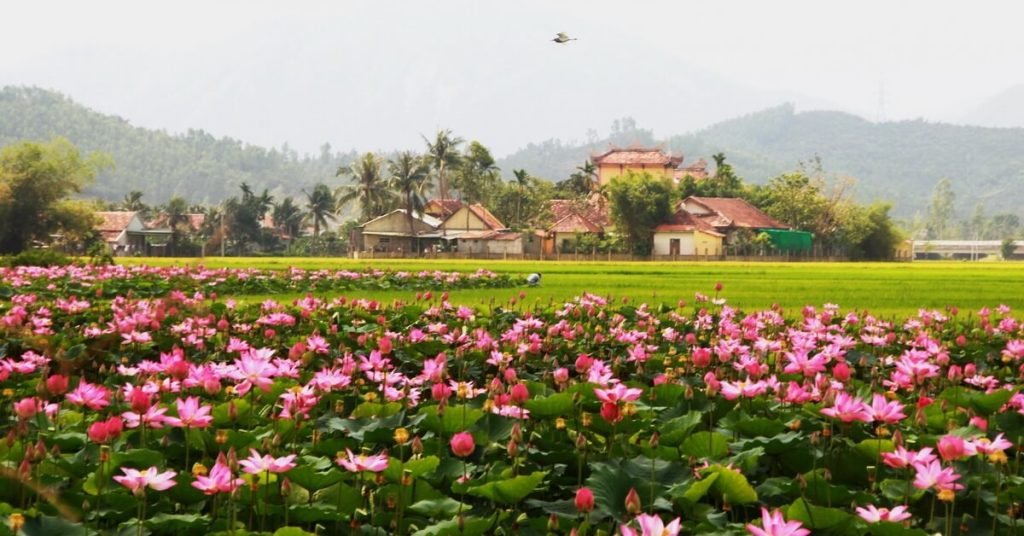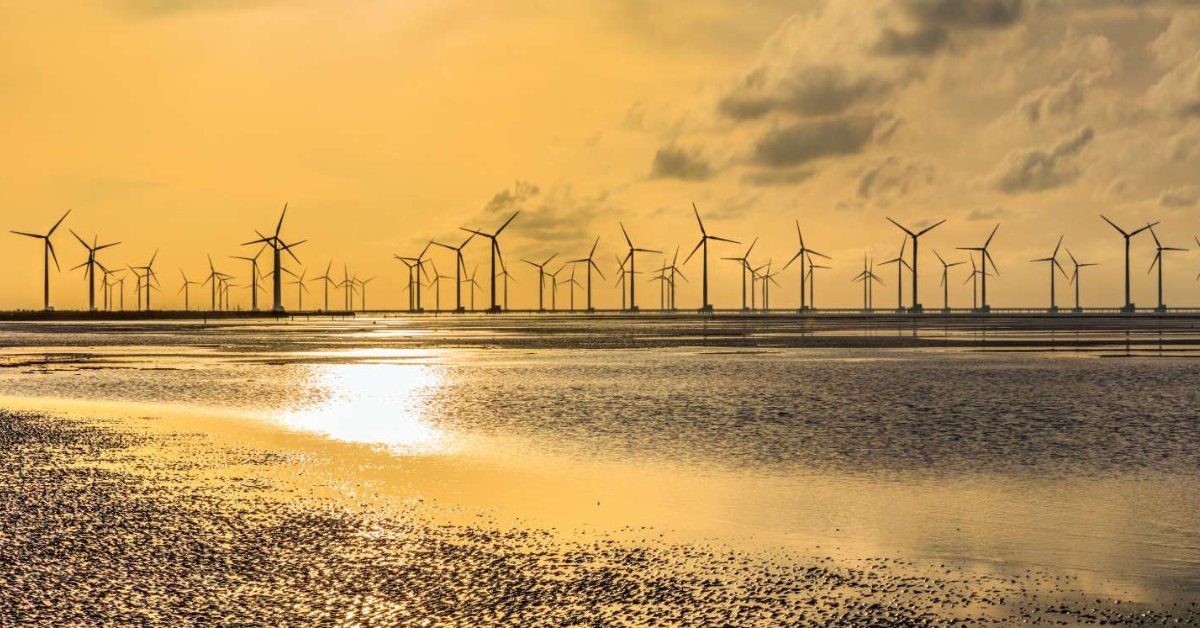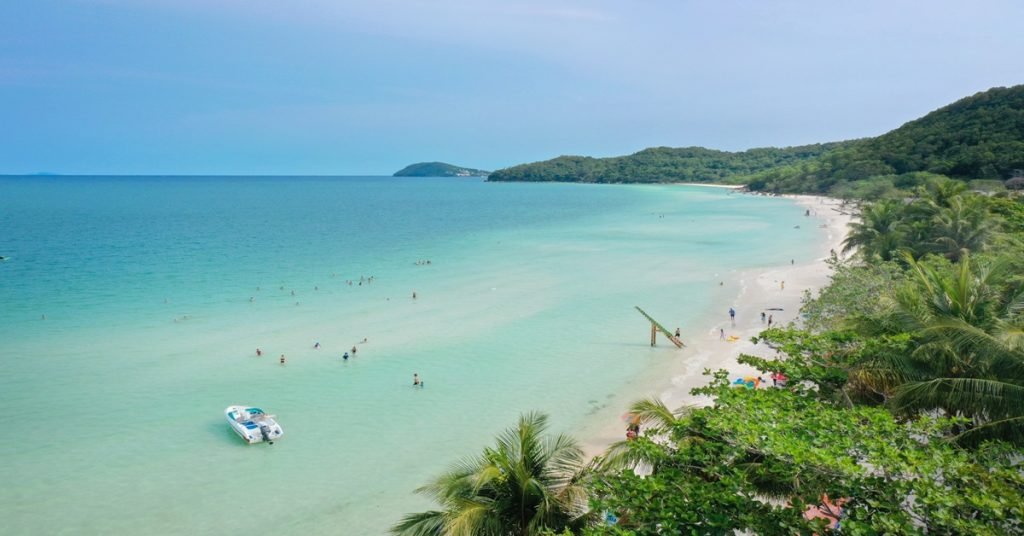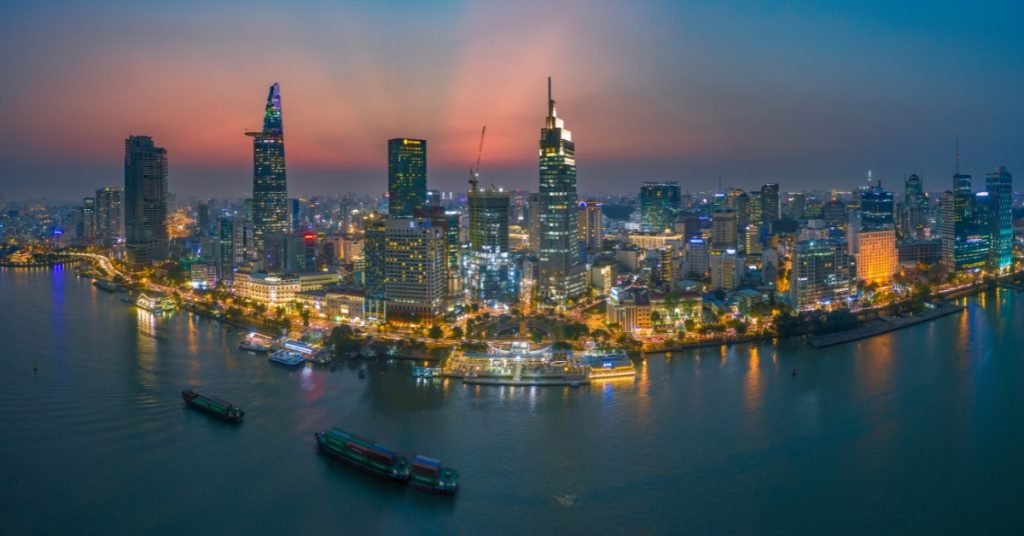The Mekong Delta region of Vietnam, with its intricate waterways and rich cultural heritage, offers a unique blend of adventure, spirituality, and natural beauty. This guide delves into the distinct attractions and essential travel information for Kiên Giang, An Giang, Đồng Tháp, and Tây Ninh, ensuring you experience the best of each province. It is home to four ethnic groups: Vietnamese, Chinese, Khmer, and Cham.
Best Time to Visit: The ideal time to explore these provinces is during the dry season from November to April, offering pleasant weather suitable for outdoor activities and travel.
Kiên Giang
Top Attractions:
- Phu Quốc Islands (Đảo Phú Quốc): Famous for its white-sand beaches and lush national park.
- Son Island (Sòn Sơn): Ideal for snorkeling and island-hopping.
- Ha Tien city (Thành Phố Hà Tiên): Known for its stunning caves and vibrant night markets.
- So Mo Cave (Hang Sơ Mo): A mysterious cave known for its cool climate and serene natural beauty, often explored by adventurous travelers
- Hòn Phụ Tử: Famous for its unique rock formations that resemble a father and son, set against the backdrop of the ocean.
- Rach Gia city (Thành Phố Rạch Giá): Gateway to island adventures and rich in Khmer culture.
An Giang
Top Attractions:
- Sam Mountain (Núi Sam): Offers panoramic views and spiritual sites.
- Ba Chua Xu Temple (Miếu Bà Chúa Xứ): A center of pilgrimage for the Vietnamese.
- Tra Su Bird Sanctuary (Rừng Tràm Trà Sư): Explore its flooded forests by boat.
- Cam Mountain (Núi Cấm): Another peak offering splendid views and temples.
- Bung Binh Thien Lake (Hồ Búng Bình Thiên): A beautiful and serene water body.
Đồng Tháp
Top Attractions:
- Tràm Chim National Park: Spot the rare Sarus crane.
- Sa Đéc Flower Village: Bursting with color year-round.
- Gáo Giồng Eco-Tourism Park: Immerse in nature and local life.
- Xẻo Quýt: Part historical site, part eco-tourism area.
- Huỳnh Thủy Lê Ancient House: a historical residence in Sa Đéc, Vietnam, renowned for its intricate architecture and its association with the love story between Marguerite Duras and Huỳnh Thủy Lê..
Tây Ninh
Top Attractions:
- Black Lady Mountain (Núi Bà Đen): Offers hiking, temples, and festivals.
- Cao Đài Temple: Stunning architecture and unique religious practices.
- Dầu Tiếng Reservoir: A peaceful retreat for fishing and picnics.
- Chùa Bà: A historic temple with significant local influence.
- Lo Go-Xa Mat National Park: For trekkers and wildlife enthusiasts.
Bến Tre
Top Attractions:
- Vàm Hồ Bird Sanctuary: A vibrant sanctuary where visitors can observe a diverse array of bird species in their natural mangrove forest habitat.
- Bến Tre Riverside Market: Offers a genuine local experience with an assortment of fresh seafood, local specialties, and handicrafts.
- Phung Island (Cồn Phụng): A peaceful retreat featuring traditional coconut candy workshops, lush orchards, and opportunities for bicycle tours along its scenic paths.
Vĩnh Long
- An Binh Island (Cù Lao An Bình): Famous for lush orchards and homestays.
- Vĩnh Long Market (Chợ Vĩnh Long): Known for local crafts and fresh produce.
- Tien Chau Pagoda (Chùa Tiên Châu): Southern historic architecture pagoda
- Ong Temple (Chùa Ông Thất Phủ Miếu): Chinese istorically important local temple.
Trà Vinh
- Ang Pagoda (Chùa Âng): Ancient Khmer pagoda.
- Ba Om Pond (Ao Ba Om): Serene pond with historic significance.
- Hang Pagoda (Chùa Hang): Features natural caves.
- Vam Rai Temple (Chùa Vam Rai): One of the oldest Khmer pagodas showcasing exquisite architecture.
Sóc Trăng
- Bat Pagoda (Chùa Dơi): Houses thousands of bats.
- Khleang Temple (Chùa Khleang): Rich in Khmer cultural heritage.
- Nga Nam Floating Market (Chợ Nổi Ngã Năm): Unique market at the confluence of five rivers.
- Chen Kieu Pagoda (Chùa Chén Kiểu): Famous for its vibrant ceramic decorations.
Bạc Liêu
- Bạc Liêu Bird Sanctuary (Khu bảo tồn chim Bạc Liêu): A haven for birdwatchers.
- The Prince of Bạc Liêu’s House (Nhà Công Tử Bạc Liêu): Reflects the lavish lifestyle of a 20th-century landowner.
- Bạc Liêu Wind Farm (Trang trại gió Bạc Liêu): The first of its kind in Vietnam.
- Cao Van Lau Memorial House (Nhà Tưởng Niệm Cao Văn Lầu): Dedicated to a famous composer of traditional music.
Travel Essentials for the Mekong Delta
Getting Around: Travel between destinations is facilitated by an extensive network of buses, boats, and taxis. Renting a motorcycle or bicycle offers a more personal and flexible way to explore the rural landscapes.
Travel Tips:
- Every weekend, the localities in the Mekong Delta typically organize country markets that sell traditional Western Vietnamese dishes. Please ask the hotel reception for more details.
- Always carry water and sunscreen, as the delta can be hot and humid.
- Be prepared for rural travel conditions; some remote areas may have limited amenities.
- Engage with local tour guides to enrich your understanding of the cultural and natural heritage of the regions.
Ethnic Diversity of the Mekong Delta
In the Southwest region of Vietnam, four main ethnic groups—the Vietnamese, Chinese, Khmer, and Cham—each contribute uniquely to the region’s cultural mosaic.
The Vietnamese majority influences agricultural practices, particularly rice cultivation, and local traditions throughout the Mekong Delta. The Chinese, or “Hoa,” community has historically played a significant role in the local economy through trade and business. They have established vibrant communities, particularly in cities like Can Tho and Soc Trang, and are known for their significant contributions to trade, craftsmanship, and the culinary scene, adding a rich layer of cultural diversity with celebrations such as the Lunar New Year and the Mid-Autumn Festival.
The Khmer people are prominent in provinces such as Soc Trang and Tra Vinh and are known for their rich cultural traditions. Their major festivals include Chol Chnam Thmay (New Year festival), which features colorful gong performances and Buddhist rituals. The Khmer in Vietnam maintain distinct traditional costumes, combining elements like the “sarong” and “sbay,” and their daily life is deeply rooted in both their community pagodas and agricultural activities.
The Cham people, predominantly Muslim in the Mekong Delta, maintain unique traditions and crafts, such as weaving. Their religious and cultural practices are distinct from the other groups, with celebrations like the Roja festival highlighting their community’s rich cultural tapestry.
Together, these groups create a vibrant community in Vietnam’s Mekong Delta, characterized by a blend of languages, religions, and cultural practices. Their coexistence and interaction have shaped the social and cultural landscape of the region, making it one of the most diverse and culturally rich areas in Vietnam.
More Experiences
Vung Tau
Vung Tau, a vibrant coastal city in southern Vietnam, is a favored destination for both…
Tien Giang
Gateway to the Mekong Delta Tiền Giang is often the first stop for many travelers…
Phu Quoc Island
The Island Paradise Phú Quốc, the largest island in Vietnam, located in the Gulf of…
Ho Chi Minh city
The Bustling Metropolis Thành Phố Hồ Chí Minh, formerly known as Saigon, is the economic…



